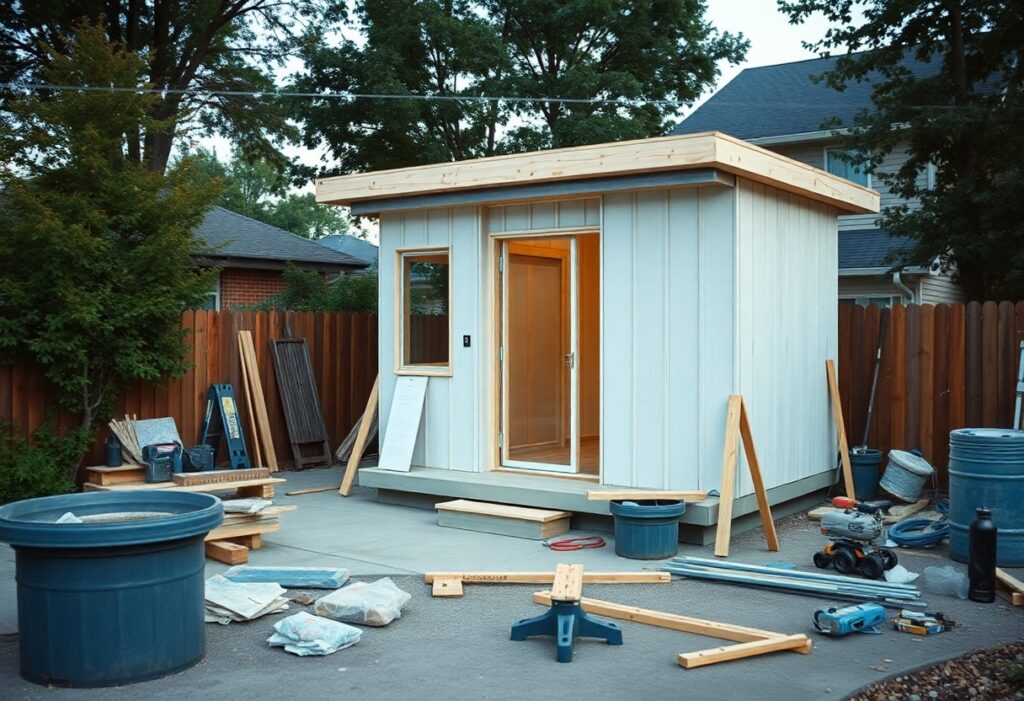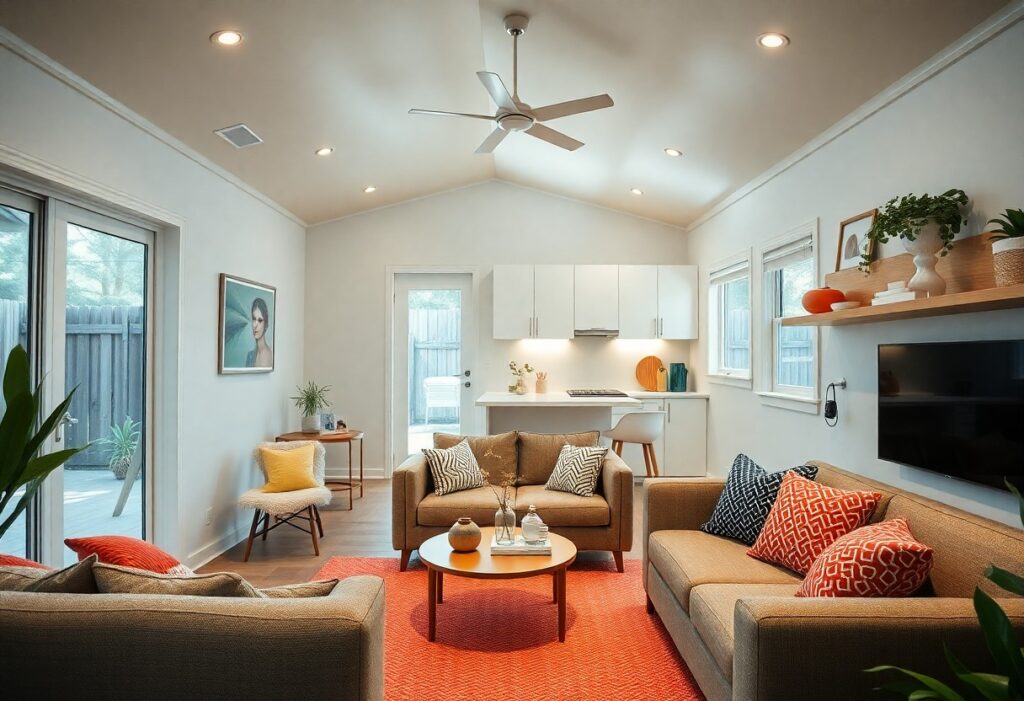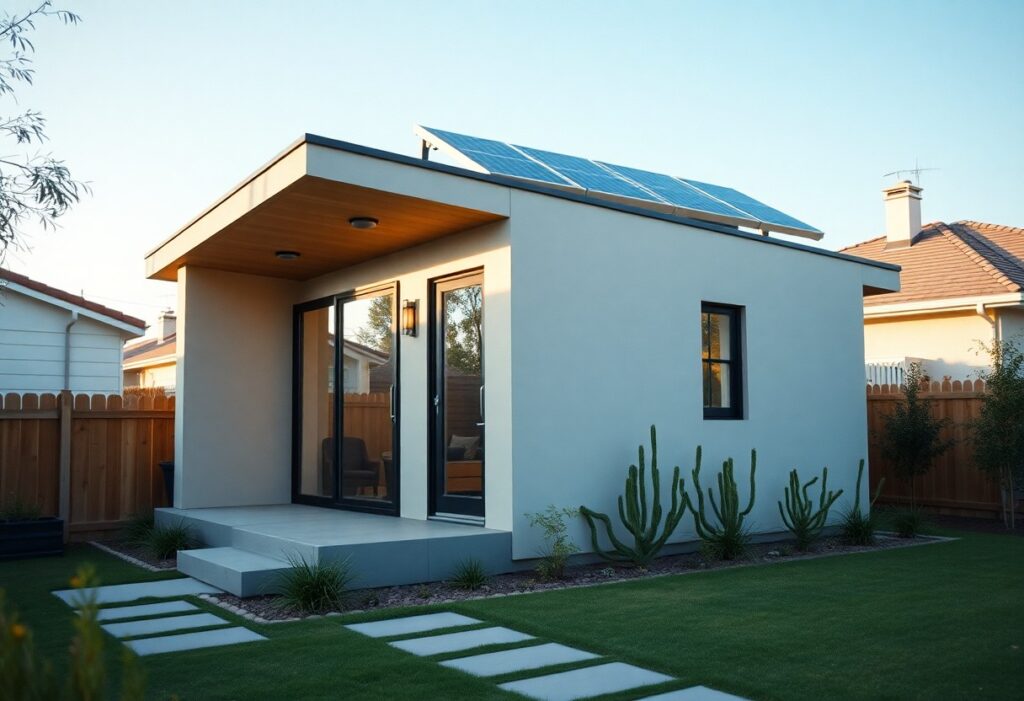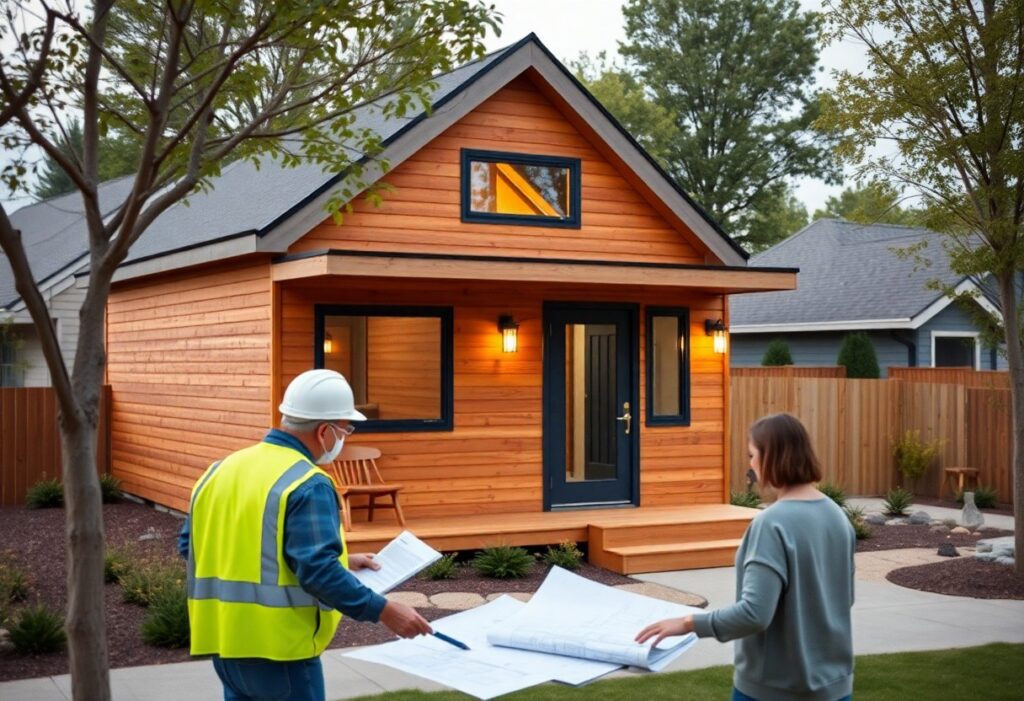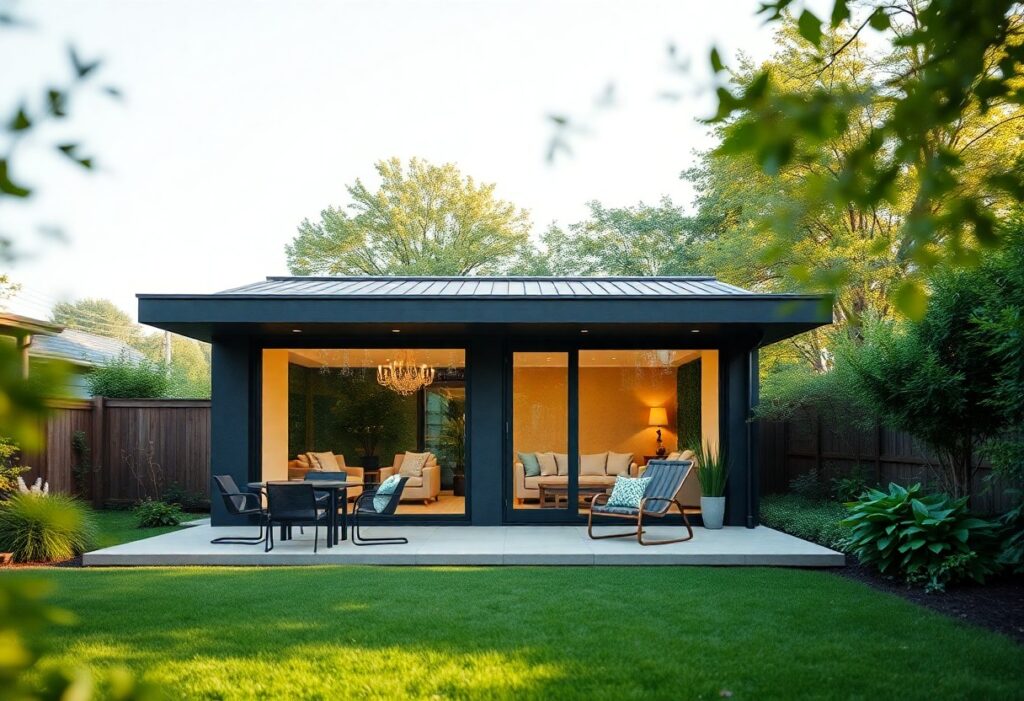The principle of tall ceilings can dramatically influence both the aesthetics and atmosphere of your space. When you incorporate heights that soar, you create an illusion of expansiveness while also enhancing natural light flow, making rooms feel more inviting and open. Additionally, tall ceilings can have a positive impact on your creativity and productivity, allowing you to think freely and with greater clarity. For more insights into this design element, check out The Psychology of High Ceilings and Creative Work Spaces.
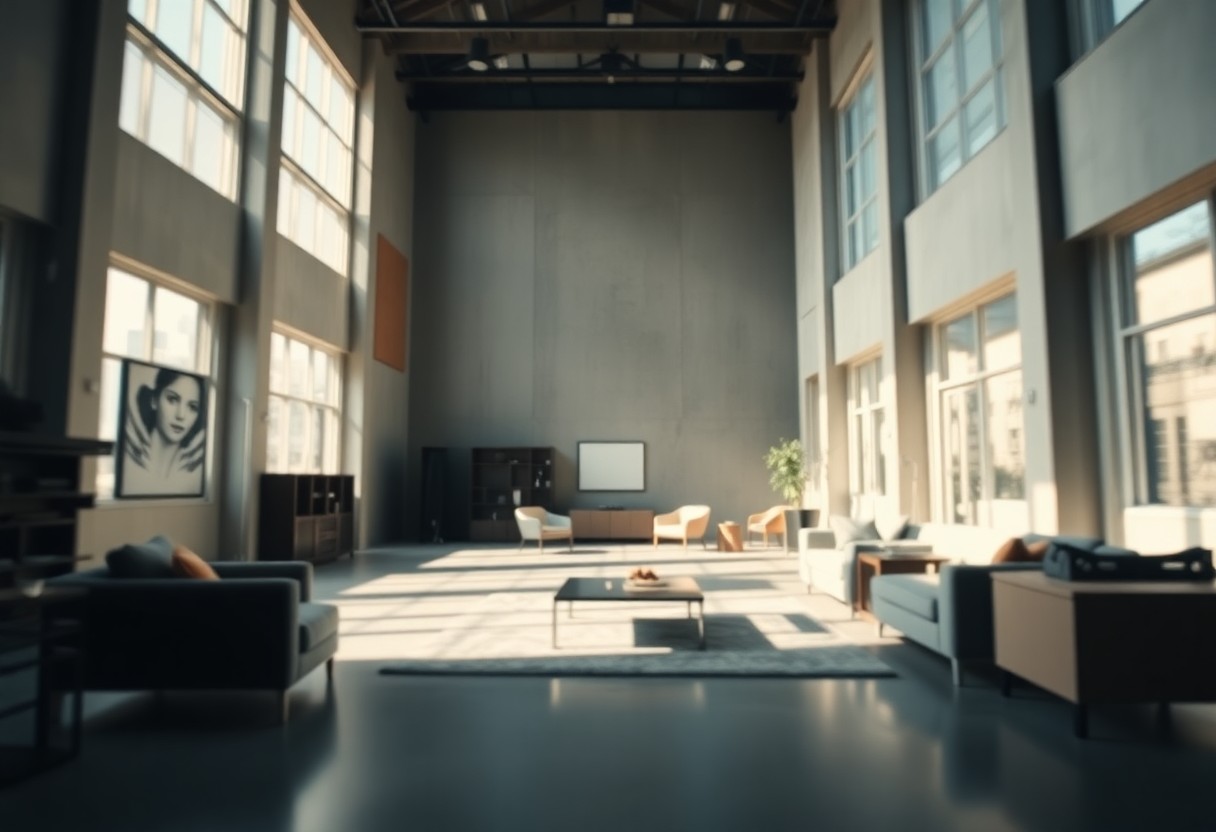
Key Takeaways:
- Spatial Perception: Tall ceilings create an illusion of greater space, enhancing the overall ambiance and making rooms feel more open and airy.
- Natural Light: Higher ceilings can improve the distribution of natural light, allowing for better lighting conditions throughout the space.
- Design Flexibility: The added height provides opportunities for creative architectural features like taller windows, expansive light fixtures, and decorative moldings.
The Aesthetic Appeal of Tall Ceilings
The aesthetic allure of tall ceilings cannot be overstated. They create an atmosphere of elegance and grandeur within your space. By drawing the eye upward, tall ceilings not only augment the sense of spaciousness but also enhance natural light, making your interiors feel vibrant and alive. This style can transform even the most modest of rooms into a stunning visual experience, adding a touch of sophistication that is hard to replicate.
Visual Impact
About the visual dynamics created by tall ceilings, you will find that they significantly influence how you perceive a space. The elevated height can make rooms appear more expansive, which is particularly beneficial in smaller areas. Additionally, the play of light and shadows accentuates architectural features, inviting interest and conversation, all while providing a unique backdrop for your personal decor choices.
Architectural Styles
Appeal is evident in various architectural styles that incorporate tall ceilings, each offering a distinctive vibe. You may notice that classic styles like Victorian and Georgian often feature impressive ceiling heights adorned with intricate moldings. Modern designs, on the other hand, might embrace minimalism while still highlighting height, yielding a clean and airy look. Regardless of your style preference, tall ceilings can significantly elevate the aesthetic and functionality of your home.
Also, many contemporary and traditional homes utilize tall ceilings to enhance their overarching architecture. In a traditional setting, you might see coffered or cathedral ceilings reflecting a sense of history and timelessness. Meanwhile, modern designs often showcase expansive, open spaces that feel unrestricted and luminous. By embracing these architectural traits, you can cultivate not just beauty but a feeling of freedom and luxurious living in your home.
Benefits of Tall Ceilings
It’s no secret that tall ceilings can transform your living space, offering benefits beyond mere aesthetics. From creating a sense of grandeur to enhancing comfort and functionality, investing in high ceilings can significantly improve your home ambiance. These lofty designs can also contribute to increased property value and attract prospective buyers. For more insights, check out What is the purpose of high ceilings?
Enhanced Natural Light
Above all, tall ceilings allow for larger windows, thereby maximizing the amount of natural light that floods your living spaces. This influx of sunlight not only brightens your environment but also creates a welcoming atmosphere, making your home feel more open and vibrant.
Improved Air Circulation
Above small spaces, tall ceilings contribute significantly to better air circulation. As warm air rises, a higher ceiling allows for a greater volume of air to flow freely, enhancing the overall climate control in your home.
This improved air circulation can lead to a more comfortable environment, especially during warmer months. With a greater space for airflow, your home can feel cooler and more pleasant, reducing reliance on air conditioning. Furthermore, effective air circulation minimizes the risk of mold growth and improves indoor air quality, positively impacting your health and well-being.
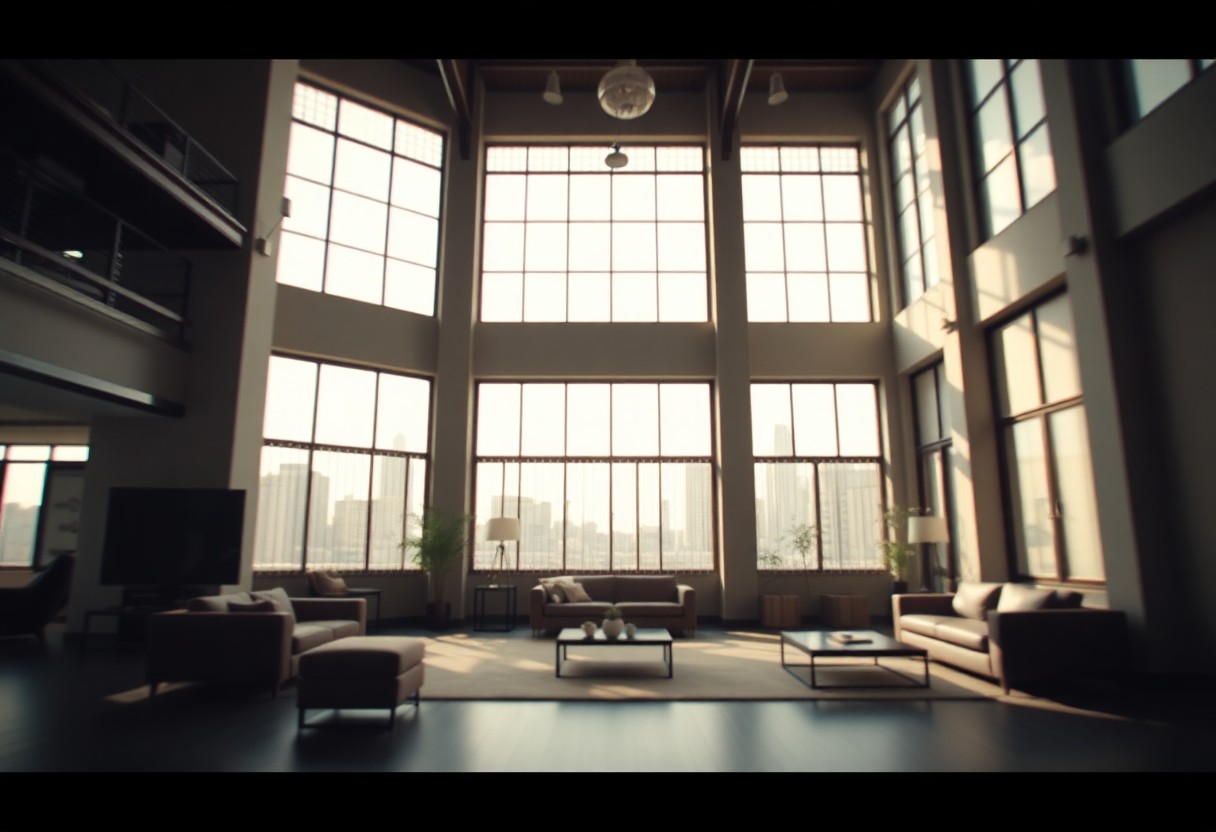
Design Considerations
Unlike standard ceiling heights, tall ceilings require specific design considerations to enhance the overall aesthetic and functionality of your space. When planning your design, think about how to balance the verticality with functionality, incorporating elements such as appropriate lighting, room layout, and furnishings that complement the height while ensuring comfort and usability.
Proportion and Scale
To achieve harmony in your space, focus on proportion and scale, ensuring that your furniture and decor suit the lofty environment. Oversized furniture can enhance the grandeur of tall ceilings, while the placement of artwork and accessories should provide visual interest without overwhelming the room.
Material Choices
After establishing the right proportions, consider your material choices to enhance the feel of the room. From wood beams for warmth to glass accents that reflect light, each selection plays a role in liveability and style.
And as you choose materials, also consider their textural and visual impact on the space. For instance, using lighter colors on walls can elevate the feeling of airiness, while darker tones may contribute a sense of intimacy within an expansive area. Incorporating natural materials, such as stone or wood, can ground the space, while incorporating metals or glass can add a contemporary touch. Ultimately, your material choices shape not just the aesthetics but also the ambiance, making it vital to select them carefully.
Tall Ceilings in Different Spaces
Your living environment can significantly benefit from the aesthetic and functional advantages of tall ceilings. In residential spaces, they not only create a sense of openness but also allow for abundant natural light to flood the room, enhancing the overall ambiance. High ceilings can also accommodate grand fixtures like chandeliers or artistic elements that add personality to your home.
Residential Applications
Along with aesthetic appeal, tall ceilings in your home can improve airflow, making spaces feel more comfortable. They can also serve as a perfect backdrop for taller furniture and decor, fostering a sense of elegance and spaciousness that enhances your living experience.
Commercial Environments
An increasing number of businesses are opting for tall ceilings in their workplaces and retail spaces. These environments benefit from enhanced natural lighting and greater acoustic control, creating an inviting atmosphere for both employees and customers.
At the same time, adopting tall ceilings in commercial environments can lead to significant energy savings, as strategic ventilation and natural lighting reduce reliance on artificial systems. The visual impact of high ceilings can also promote a sense of openness, making your space feel less claustrophobic and more welcoming to clients. However, be cautious about incorporating inadequate soundproofing, as echoes can become problematic in larger spaces, affecting communication and overall comfort.
Challenges and Solutions
Not every design choice comes without its obstacles. While tall ceilings can elevate your space aesthetically, they also introduce challenges such as heating and cooling inefficiencies, and acoustic issues that can impact your comfort and privacy. To optimize these factors, it’s necessary to explore effective solutions that maintain the beauty of tall ceilings while ensuring a cozy and functional environment.
Heating and Cooling Issues
Any space with tall ceilings can pose significant heating and cooling challenges. Air tends to rise, leading to uneven temperature distribution, often leaving the upper areas warm while the lower areas remain cold. To remedy this, consider installing ceiling fans or choosing effective HVAC systems that circulate air evenly throughout the room.
Acoustic Considerations
Against the backdrop of your spacious design, you might face acoustic challenges that can detract from the comfort of your home. High ceilings can create an echo effect, making sound travel further and leading to noise distractions. This is especially challenging in open-concept areas where multiple activities occur simultaneously.
For instance, installing sound-absorbing materials like acoustic panels, rugs, or heavy drapes can help mitigate these issues. Additionally, using furniture strategically can aid in sound diffusion, breaking up noise and creating a more tranquil environment. Consider exploring specialized acoustic ceiling tiles that can enhance sound insulation and maintain the design aesthetic of your tall ceilings. Ultimately, addressing acoustics is pivotal for creating a harmonious living space that caters to your needs.
Inspiration from Architectural Case Studies
Keep in mind that historical and contemporary architectural innovations can serve as vital inspirations for your design vision. Consider these notable examples:
- The Basilica of St. Peter, Vatican City – features a ceiling height of 19 meters, enhancing its majesty.
- The Eiffel Tower, Paris – soars to 300 meters, showcasing the aesthetic possibilities of verticality.
- The National Cathedral, Washington D.C. – boasts a nave with impressive 27-meter ceilings.
Historic Examples
An excellent historical reference is the Palace of Versailles, renowned for its spectacular Hall of Mirrors. Spanning 73 meters in length and featuring ceilings adorned with gold leaf and paintings, this space illustrates how tall ceilings amplify opulence and grandeur, leaving a lasting impression on all who enter.
Contemporary Innovations
On the modern side, the One World Trade Center in New York City incorporates soaring ceilings in its observation deck, focusing on an open and lofty environment. Such innovations have redefined how you experience space, providing a seamless blend of aesthetics and functionality.
Innovations in architectural design today place tall ceilings at the forefront, emphasizing both natural light and visual communication. Using materials like glass and steel, designers create dynamic environments that foster collaboration and well-being. Smart technologies integrated into these spaces can optimize comfort and energy efficiency, proving that tall ceilings are not only aesthetically pleasing but also beneficial for environmental sustainability. As you explore these modern practices, consider how they might inspire your own projects.
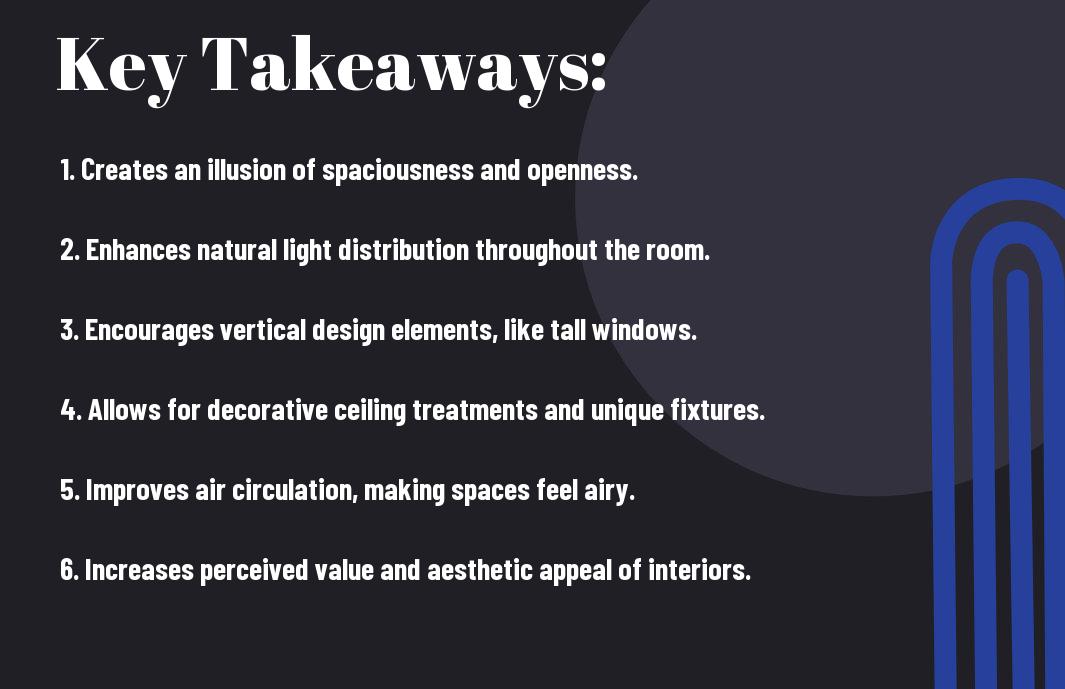
Final Words
To wrap up, incorporating tall ceilings into your design can significantly enhance the ambiance of your space. You can create an illusion of openness and spaciousness, allowing natural light to flow freely and energizing your environment. Such heights also provide you with the opportunity to experiment with architectural elements, like large windows and dramatic lighting fixtures, effectively elevating your design aesthetics. Ultimately, when you choose to embrace tall ceilings, you’re not just making a stylistic decision; you’re investing in a more inviting and versatile atmosphere for you and your guests.
FAQ
Q: What are the benefits of having tall ceilings in a design?
A: Tall ceilings can significantly enhance the feeling of spaciousness and openness within a room. They allow for improved air circulation, which can help regulate temperature and create a more comfortable environment. Additionally, the visual impact of tall ceilings can be stunning, enabling creative design options such as extensive window placements or the incorporation of dramatic light fixtures.
Q: How do tall ceilings affect the acoustics of a space?
A: Spaces with tall ceilings can have unique acoustic characteristics. The increased height can lead to a more complex sound environment, as sound waves may travel differently than they would in a room with lower ceilings. This can contribute to echoes or a sense of greater reverberation, which may necessitate the use of sound-absorbing materials or design features to achieve a balanced auditory experience.
Q: What design elements work best with tall ceilings?
A: To effectively complement tall ceilings, consider incorporating vertical design elements that draw the eye upward, such as tall bookshelves, oversized artwork, or vertical paneling. Lighting fixtures such as chandeliers or pendant lights can create a focal point, while the use of layered lighting can enhance the overall ambiance. Additionally, using a cohesive color palette that ties the room together can help create a harmonious design that feels balanced despite the height.

